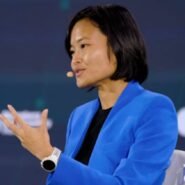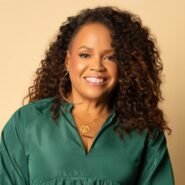In this article, we explore the profile of CEO Sheryl Sandberg and how Facebook, she, and Leaning In overcame so many obstacles in history before finally finding success.
The executive was able to exercise feminine power in all its splendor. A journey through her fascinating career!
A CEO who was part of TED Talks
At first, Sheryl Sandberg’s worldview was clear and simple. Concluding her now-famous 2010 TED talk on female leadership, she said what she wanted was a world in which women ran 50% of companies and 50% of countries.
“I want my daughter to have the choice not just to succeed,” Sandberg said, “but to be liked for her accomplishments.”
For a few years, Lean In—the philosophy of life and career that Sandberg would detail in her 2013 book—seemed poised to help women push through their own personal glass ceilings in the corporate ladder.
With that, Sandberg built a progressive reputation that aligned perfectly with the one she was crafting for Facebook, known for being a magnet for prodigies and a force for connection and bridging differences.
Now Sandberg is leaving Facebook after 14 years of leadership, most of them as its second most famous executive. And yet, her own journey there may be the most compelling indictment of Lean In’s principles (and there were already many).
It took a pandemic and a prolonged political crisis to prove what critics had said from the start: a feminism focused solely on putting women into power through self-efficacy would not shift the power balance between men and women nor make the world a more fair and equal place.
Sandberg became Mark Zuckerberg’s COO, CEO of Facebook, in 2008, when the founder was only 23 years old.
Facebook was a young company, already a sensation, but mainly known for connecting college students. And its mission was still wrapped in the promise of providing a unique social good—a mechanism for human connection enabled by technological advancement and the grand vision of its founder.
But it needed to make money. As Zuckerberg said when announcing her hiring, “Sheryl understands Facebook’s goal to connect everyone in the world and is passionate about building a business that allows us to make this mission a reality.”
At that time, Facebook had about 500 employees and 100 million users. Barack Obama was about to win the Democratic presidential nomination over Hillary Clinton and begin his campaign against Republican John McCain with a message of hope and change. And the Great Recession was only a few months away.
A former McKinsey consultant and Google executive, and a protégé of Harvard economist Larry Summers—whom she worked for both at the World Bank and the U.S. Treasury—Sandberg was an ideal partner in Zuckerberg’s liberal technocratic dream.







